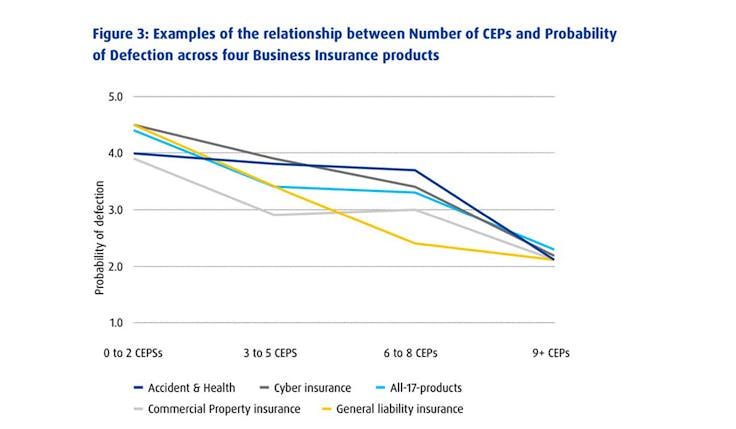
Source: Shutterstock
“The most important search engine is still the one on our minds.”
This quote, from Jon Bradshaw, founder of consultancy Brand Traction, is the most profoundly concise insight we’ve heard in a long time.
What does it mean exactly?
Well, imagine you are a tourist in Dublin.
You are inside Mulligans, a fabulous 168-year-old pub on Poolbeg Street.
A jovial Irish bartender approaches.
“What will you have to drink?” he asks
So how do you decide what to order? Take out your iPhone and type “What drink should I have in a pub in Dublin?” in the search box?
Of course not.
You don’t search Google, you search your brain.
And because humans are “cognitive misers”, you default to simple and quick searches like “drink, pub, dublin”. Your brain retrieves a short list of options from its memory banks. And then, to save yourself time and energy, your brain usually chooses the most obvious option.
Guinness.
Today, marketers invest billions of dollars in search engine optimization. We want our brands to come to mind easily when shoppers enter the market. We have the right goal, but we’re optimizing for the wrong search engine. The right search engine is what you have in mind.
This is why the real focus of marketers should be Brain Engine Optimization (BEO).
That’s right: BEO is the new SEO.
But how do you optimize search results inside a buyer’s brain?
We’re not smart enough to answer that question, but we know someone who is: Professor Jenni Romaniuk of the Ehrenberg-Bass Institute, one of the greatest marketing thinkers of our time.
Our team at the B2B Institute published new research from Romaniuk that we believe could revolutionize the way B2B marketing works. The paper explains how B2B marketers can grow their businesses through Brain Engine Optimization.
Category entry points are the actual keywords
BEO is not that different from SEO.
The goal remains to link your brand to a keyword, a mental keyword. Or what Romaniuk calls a “category entry point” (CEP).
What exactly are CEPs?
To quote the professor: “CEPs are the cues that shoppers use to access their memories when faced with a purchase situation and can include any internal cues (e.g., motives, emotions) and external cues (e.g., location, time of day) that affect any purchase. situation.”
And why are CEPs so important?
Because in a buying situation: “a category-first buyer relies on existing memories to identify potential brands to buy. These brands generated by memory are the starting point of the buying process. Other sources and search engines (eg Google, colleagues) are consulted only if the options generated by memory are insufficient. And even when the query does occur, shoppers still show a bias for brands they already know.”
Ehrenberg-Bass: Linking Brand Messages to Buying Situations Wins ‘Mind and Market’
That’s why you didn’t pull out your phone to decide what drink to order at Mulligans. Decades of advertising and marketing made Guinness the obvious choice in this buying situation.
This also explains how most marketing works to increase sales: by linking the brand to CEPs long before the customer needs to buy. In his latest research, Romaniuk shows that B2B brands with more links to more CEPs are more likely to be purchased. Just as pages with more backlinks rank higher in Google search, brands with more CEP links rank higher in brain search.
And CEPs don’t just help with customer acquisition. CEPs also help with customer retention. According to research, each additional CEP link reduces the odds of churn by 5%. If you care about acquisition or retention, you should care about CEPs.
 The relationship between CEPs and customer churn. Source: LinkedIn
The relationship between CEPs and customer churn. Source: LinkedIn
How to optimize category entry points
Just as marketers use digital data to optimize Google search, marketers can use market research to optimize brain search. Brain motor optimization is a four-step process.
Step 1: Identify the relevant ZIP codes for your category
Start by surveying buyers to understand the cues that trigger a buying situation. In B2B, you want to understand both the business needs and the professional needs of the buyer.
Why does the buyer need automation software? There are probably multiple CEPs for this, such as facilitating a tedious question (a business CEP) or looking for a promotion (a professional CEP). ZIP Codes will be very different for a beer buying situation, from “when I’m in an Irish pub” to “if I’m having a horrible day at the office”.
Step 2: Prioritize the right ZIP Codes for your brand
With SEO, try to pick the most valuable keywords. With BEO, try to pick the most valuable ZIP codes. There might be 50 different CEPs for the cloud computing category, but not all are equally attractive to IBM.
You can quantify the commercial value of a CEP by analyzing the ‘three Cs’: commonality, credibility and competitiveness. In other words, prioritize CEPs that occur frequently, are easy to associate with your brand, and aren’t already associated with competitors.
Priority CEPs are the paths to profit
Step 3: Create (and update) links between your brand and CEPs
Now that you’ve identified the most profitable CEPs, it’s time to start investing. To start, focus on no more than three or five ZIP codes (the smaller the brand, the smaller the list should be).
Find creative ways to present CEPs in your marketing and advertising, and co-present alongside your distinctive assets (Guinness’s claw, Oracle’s red, Intel’s bell).
Align with your vendors to make sure you’re talking about the same CEPs (which are really just your biggest customer needs).
Place the CEPs on your website and in your Powerpoint presentations.
Here it is a great example from Microsoft, which uses ‘co-presentation’ to link the brand (Teams) to relevant CEPs for a buying situation (online education).
Step 4: Measure the effectiveness of your CEP building efforts
If you’re doing your job right, over time you should see an increase in the number of shoppers linking key ZIP codes to your brand.
Most of us are busy trying to tie the brand to a bunch of fluffy perceptual attributes that marketing thinks are important, like ‘innovation’ and ‘reliability’. Instead, link to CEPs that your customers find important. It’s a more cost-effective approach and much easier to explain to sales and finance, who are notoriously skeptical of brand marketing.
Memory generation is the best form of lead generation
Most B2B marketers are obsessed with generating leads, but the best B2B marketers are obsessed with generating memories.
If your brand isn’t remembered in a buying situation, they’re not likely to buy it, period. Most people only buy what they can easily remember, and brain engine optimization is how you increase the odds of being easily remembered. And since brain engine optimization drives the majority of sales, it should be the number one priority for every B2B (and B2C) marketing department.
SEO is overrated.
BEO is underrated.
If you win the mind, you win the market.
Peter Weinberg and Jon Lombardo are the heads of research and development at the B2B Institute, a LinkedIn think tank that studies the laws of B2B growth. You can follow Peter i John it’s LinkedIn.
[ad_2]
Source link




